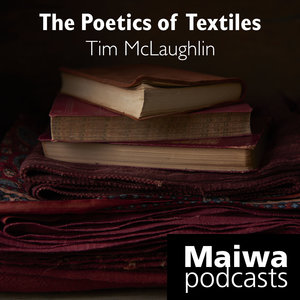 We have just had a great letter from Veronica Soul. Veronica was instrumental in bringing the Maiwa Foundation to Morocco. That might be an understatment. She was the force behind connecting the needs of the Moroccan women with our resources and desire to help. She coordinated registration; sourced local suppliers of dyestuffs; searched the market for large pots, burners, and pH neutral soaps; organized the workspace and other volunteers, and kept everything organized and focused.
We have just had a great letter from Veronica Soul. Veronica was instrumental in bringing the Maiwa Foundation to Morocco. That might be an understatment. She was the force behind connecting the needs of the Moroccan women with our resources and desire to help. She coordinated registration; sourced local suppliers of dyestuffs; searched the market for large pots, burners, and pH neutral soaps; organized the workspace and other volunteers, and kept everything organized and focused.Veronica recently met up with Amina Yabis who was a student in the 2007 workshop. Veronica tells us that Amina took her knowledge of natural dyes and began teaching others. She is now in demand as a natural dye trainer and has conducted workshops in Taroudant, Ben Semim, Ribat El Khayr, Sefrou (2 workshops for women from the Middle Atlas, attended by 10 cooperatives), Ait Yahya Ouala, Mrirt, Timhedit, Zawiyya Sidi Abdelselem, Figuig (where she trained 37 women. The training was so successful that the 37 women had a workshop and trained 120 more women. The Figuig region is now successfully using natural dyes.) and 5 workshops in the region of Azrou.
 In the old medina of Fes, there was a conference for “natural dye research specialists” from the Mediterranean region. Mr. Messaoudi (the translator for our 2007 workshop) and Amina were the only Moroccans who were invited. Amina said the participants were surprised to learn that Moroccans are using natural dyes. They didn't expect the Moroccans to know anything about natural dye techniques. Amina was so pleased to be able to talk about natural dyeing in Morocco, though there is still much work to be done.
In the old medina of Fes, there was a conference for “natural dye research specialists” from the Mediterranean region. Mr. Messaoudi (the translator for our 2007 workshop) and Amina were the only Moroccans who were invited. Amina said the participants were surprised to learn that Moroccans are using natural dyes. They didn't expect the Moroccans to know anything about natural dye techniques. Amina was so pleased to be able to talk about natural dyeing in Morocco, though there is still much work to be done.In 2009 Amina was invited to be a vendor at the Santa Fe International Folk Art Festival. This festival is a huge event and a great way for artisans to come to know western markets. Veronica met Amina because she was now traveling in the US after the Santa Fe event. The future is looking good for Amina and she has a commission from a hotel chain in France to provide naturally-dyed shag rugs using henna and walnut.
When a workshop concludes it is very difficult to say what the students will do with their new knowledge. We couldn't ask for better news than what we received in Veronica's letter.
[Update: We have just been notified via the comments section that Amina Yabis has a website. Visit the Cherry Buttons Coop here.]

































